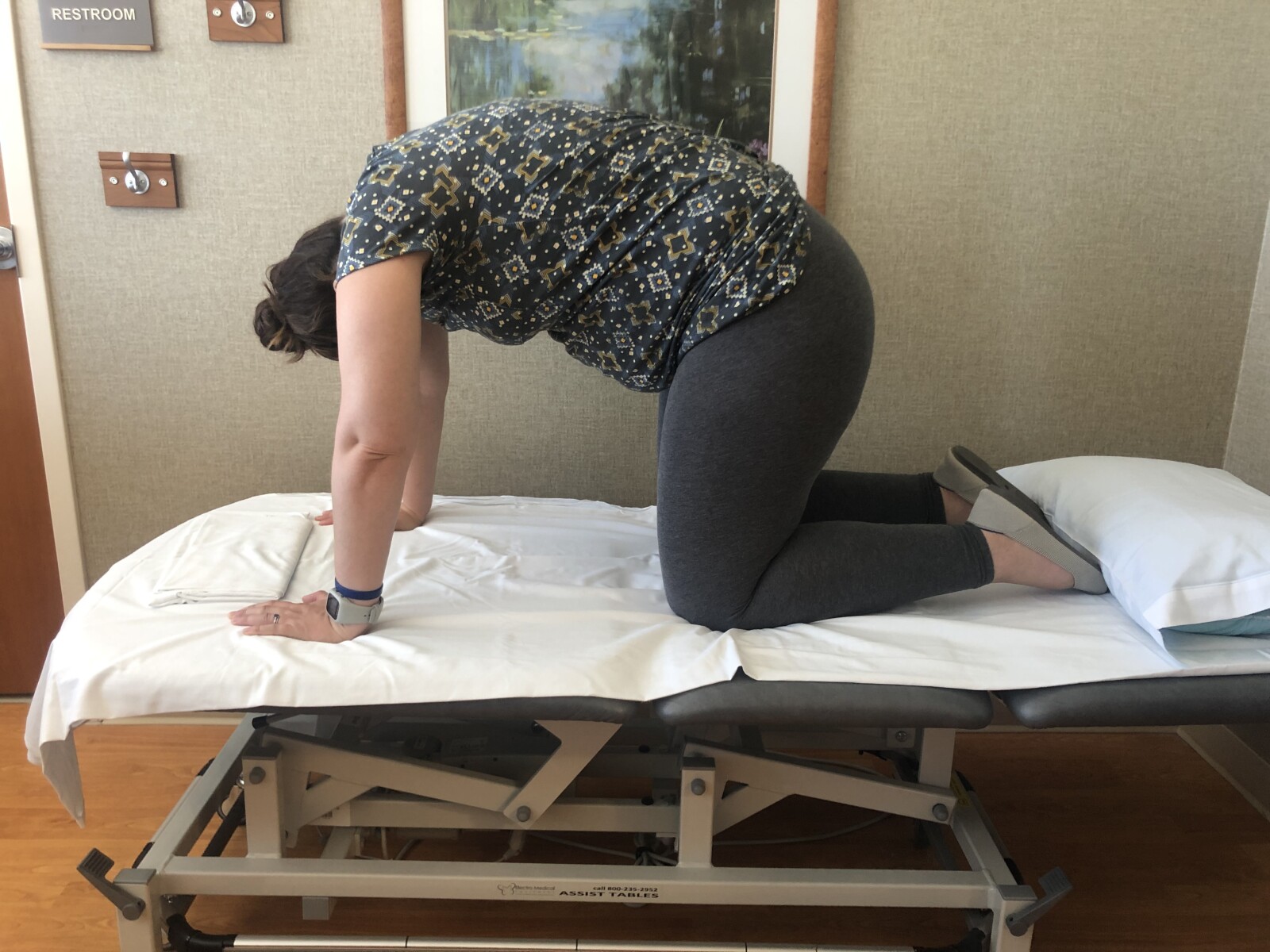
- Fok D, Aris IM, Ho J, et al. A Comparison of Practices During the Confinement Period among Chinese, Malay, and Indian Mothers in Singapore. Birth. 2016;43(3):247-254. doi:10.1111/birt.12233
- Chen LW, Low YL, Fok D, et al. Dietary changes during pregnancy and the postpartum period in Singaporean Chinese, Malay and Indian women: the GUSTO birth cohort study. Public Health Nutr. 2014;17(9):1930-1938. doi:10.1017/S1368980013001730

I think we focus a lot of attention on pregnancy and postpartum care in the pelvis and lower body. This makes sense, it's where the majority of change is happening. It's more common to have pain in the lower body, with walking or sleeping or movement in general.
The upper body is super important though. A lot of changes in posture, especially bad ones, start in the neck and shoulders. During pregnancy, your boobs are growing which places extra stress on the muscles to hold your chest up. Then you have the baby, and there's lots of holding, carrying, and lifting. Nursing too, even with a boppy pillow, has a tendency to cause us to lean forward for long periods of time.
My favorite upper body exercises to get my patients started with are bodyweight exercises or with resistance bands. This does not apply to those of you who are already in a weight lifting routine. You go ahead and crossfit and be awesome (as long as you also aren't peeing yourself doing deadlifts, because that ain't right!)
A favorite routine of mine is called Ts, Ys, Is, and/or sometimes Ws are thrown in there too, because these are the letters a person will make, somewhat, with her arms when performing the exercises. These can be modified to almost any position, which is why they are some of my favorites. Options are:
1. while sitting on an exercise ball, with light weights, or a resistance band
2. leaning over the ball while kneeling (during pregnancy with a belly). This second position is slightly more challenging because of gravity on the weight of your arms
3. Standing with light weights or using a resistance band
Here is a video link from YouTube to give a demonstration over the ball. Again, this is easily modified with a pregnant belly
https://www.youtube.com/watch?v=sJaHG1N7YHw
An excellent resource for exercises that are core, pelvic floor, and prolapse safe is FemFusion Fitness on YouTube, run by Dr. Bri PT, DPT. I love her videos and her story about advocating for herself when her healthcare providers brushed off her prolapse symptoms. (We won't hold it against Bri that she uses doTerra oils, spread that EO love! )
Here's a great video from Dr. Bri about chest opening and stretching https://www.youtube.com/watch?v=WU_8F6FZ1Ag
This question is one I get most often from postpartum women. How do I work out after having my baby?
The easiest answer is to walk. There's so much you can do with walking to scale up the intensity of the exercise: distance, speed, push the stroller with baby in tow or find a hilly park!
But eventually, most moms tell me they get tired of walking and they want to be able to do workouts like they used to pre baby. More than just moving their bodies. A real sweaty workout. Some try to get back to the classes they liked pre-pregnancy, some try to run after walking for a while. Inevitably some of them always come back to me with some complaints. They leaked, or felt pelvic heaviness, like everything was going to fall out.
My easy solution to this, if you want to feel like I'm there with you, coaching you on how to protect your abdominals and pelvic floor is to join Every Mother. This regimen is evidence based to close diastasis recti (read strengthen the abdominals safely) and involves body weight, low impact, definitely get you sweaty workouts. It's like a class at the gym, but you can do it from home or anywhere with the app on your smartphone. I know for me it’s hard to workout with the littles crawling around my legs, but I try to incorporate them into the exercise. I also love that most of the workouts are around 10 minutes, max of 20. I can often get that in before everyone wakes up, at nap time, with them around, or even sometimes in between patients at work!
I love the message of Every Mother. They are doing a great job of supporting all aspects of maternal health through their EM Village and online support groups.
Check it out and I promise you'll love it! Let me know

What is pelvic floor PT?
Pelvic floor PT is physical therapy from specialized physical therapists for diagnoses or conditions related to functions of the pelvis. This includes anything related to the bladder (peeing), bowel (pooping), or sex. It also includes any kind of aches or pain in and around the pelvis. This would include the groin, the pubic bone, low back, and abdomen. This could be for women at any age really, and some men too. There’s also a lot that a pelvic floor PT who has some obstetric training (like me!) can do during pregnancy and postpartum, since all that happens in the pelvis too.
What happens when I go see a pelvic floor PT?
The PT will talk with you about your complaints, your goals, your daily habits. Then usually there will be a physical assessment of your muscles, your movement, your posture. This could include an internal assessment of the pelvic floor muscles or not. It depends on your comfort level and if the PT thinks it is indicated. There is no need to do anything internal on the first day. Your PT should always explain the process to you and ask for your consent before proceeding! After this evaluation, your PT will be able to decide your baseline and plan the steps to help you achieve your goals.
Then what?
You and your PT will work together to create your plan of care. This might include exercises, or other things for you to do on your own at home, education, and/or lifestyle changes to make to help you achieve the goals you set out. You and your PT will decide how often you are going to meet, and if those meetings will be in person as is traditional, or perhaps a combination of in person and virtual.
I often find in my practice that I function as a health coach and a coordinator of patient care with other specialties that may be needed. Your PT should spend time with you to hear about the other members of your medical team. It’s important for everyone to be on the same page!
What questions do you have about pelvic floor/pregnancy/postpartum PT? Send them over so I can answer in a future blog post.


